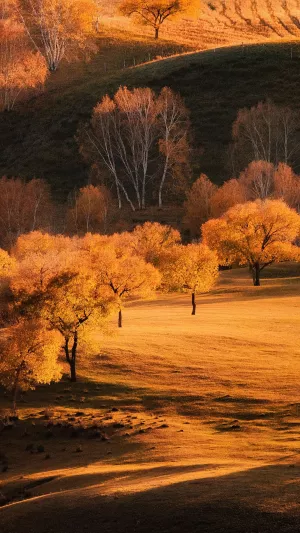As summer gradually transitions into fall, the days become shorter and the night's longer.
Autumn is coming, the autumn wind is blowing everywhere, the leaves are falling, and the green trees that used to be uniform have turned red and yellow, just like the color palette, which is unique.
In the face of this beauty, how can we miss it? This article will teach you how to take great autumn photos.
1. Best time to shoot
The best time to shoot in autumn is in the early morning and evening. During these two time periods, the light is softer and the film is better. Like shooting the morning fog in autumn in the morning, it can create a very dreamy feeling.
When the mist recedes, the light shines on the path through the forest, giving people a shocking feeling and a beautiful enjoyment!
In the evening, the sun before the setting of the mountain will cast a dreamy golden layer on the sea surface, enriching the color elements of the picture, and creating a strong autumn atmosphere.
The dusk light in autumn is softer, and there are more color changes in a short period, which is the golden season of the year for "silhouette" shooting. At dusk, the atmosphere of autumn will be more intense.
Combined with the mysterious silhouette photos, it is easier to create a special atmosphere or scene, bringing more imagination to the audience.
2. Autumn leaves
Falling leaves know that it is autumn, and we can highlight the autumn colors through close-up shots of autumn leaves.
A simple background can highlight the subject, especially for a small and messy environment such as fallen leaves that are most easily overlooked.
If you don't know how to choose a background, start with some simple solid color backgrounds.
For example, with the sunset in the background and the dead leaves in the foreground, the backlit shooting technique makes the complex veins on the leaves more eye-catching.
Or when you find a leaf with only veins left, you might as well pick it up gently and put it on the screen of your mobile phone.
With the clouds reflecting the sky on the screen, the photo looks extraordinarily dreamy.
3. Mining small worlds
Shooting autumn is not limited to a broad field of vision. Looking at the macro world is a perspective and a mood. Looking at it from another angle, every leaf and every dewdrop may have a different meaning to you.
When taking macro shots in the fall, we need to add an external macro lens to our phone so that we can focus close enough.
When no lens is installed, the phone can only focus on macros within 10cm. The installation of a macro lens can shorten the shooting distance, and objects within a distance of 3-5cm can be easily imaged.
We can try shooting a bright subject against a background of contrasting colors, such as a green insect against a background of yellow leaves.
4. Take a reflection
Bodies of water such as rivers, lakes, or ponds surrounded by trees are ideal for photographing autumn landscapes. The calm water surface can add to the calm mood of the picture, while the colorful plants around can emphasize the autumn atmosphere.
Reflections in the water can make for some very dynamic symmetrical compositions. We can capture these reflections by looking for calm waters in large lakes.
The upper part of the lens is composed of real trees with rich colors, while the foreground is composed of virtual scenes reflected on the water’s surface, which is extraordinarily quiet and leisurely.
Another more advanced way to shoot water is to use the slow-moving method to smoothen the rough water surface and create a silky texture when encountering water bodies with drops and flowing water like waterfalls and streams.





